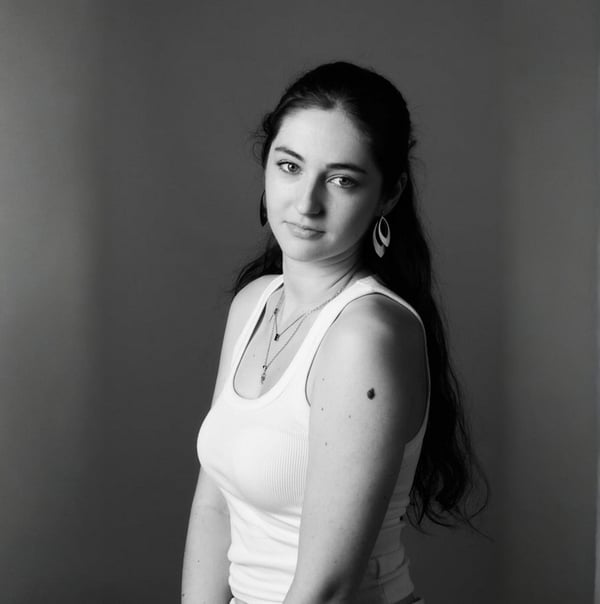The Art of Hand-Drawn Fashion Sketches in Modern Design
Table of Contents
- Why Hand-Drawn Fashion Sketches Still Matter
- Inspiration Sources for Fashion Illustrators
- The Essentials of Sketching for Designers
- Tools of the Trade: What Every Sketcher Needs
- Developing Your Signature Illustration Style
- Fashion Sketches in the Design Workflow
- The Modelia Connection: Bridging Sketch and Digital Realism
- Fashion Sketch Challenges and How to Overcome Them
- Using AI as a Design Partner - Not a Replacement
- Final Thoughts: Holding On to the Handmade
- The Timeless Power of Hand-Drawn Fashion Sketches
- FAQ: Hand-Drawn Fashion Sketches
In a world where 3D rendering, AI design, and digital prototyping are rapidly taking over the fashion industry, the humble power of hand-drawn fashion sketches is not only surviving, it’s thriving. While digital tools are faster and often more scalable, nothing captures the emotion, spontaneity, and artistry of a designer’s vision like a well-crafted hand-drawn sketch.
This article celebrates that analog edge in a digital era. We’ll explore the inspiration behind fashion sketching, share actionable fashion drawing tips, and show how traditional techniques still play a crucial role, even when paired with new-age tools like AI.
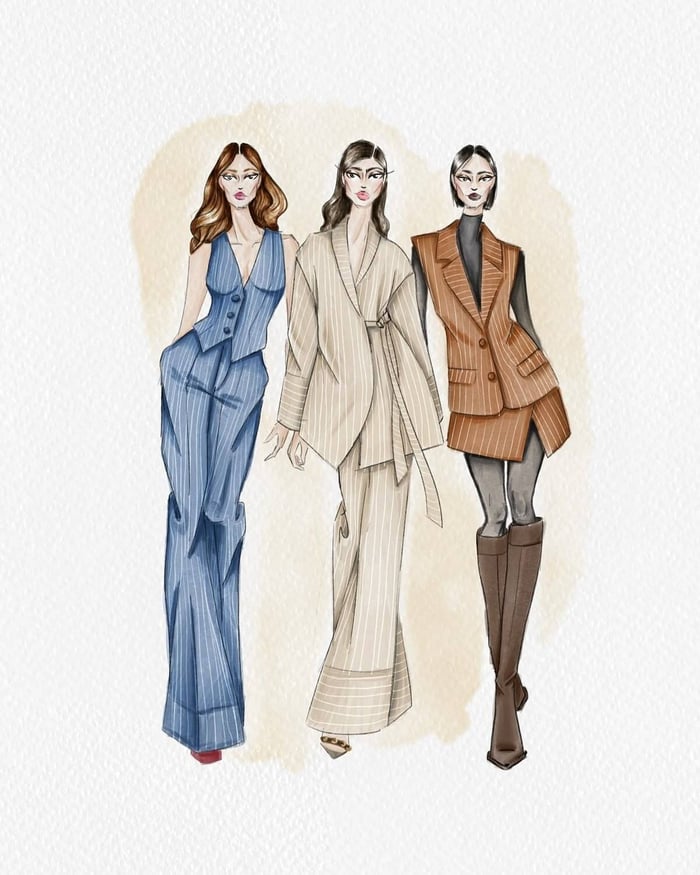
Why Hand-Drawn Fashion Sketches Still Matter
In fashion, first impressions count. And often, that first impression comes not from a sewn garment, but from a sketch on paper.
Hand-drawn fashion sketches are the raw DNA of a collection. They represent a designer’s instinct, mood, and message before fabric is ever touched. A sketch can communicate emotion, whether it’s bold minimalism or chaotic maximalism, better than many polished digital outputs.
Even in today’s tech-forward landscape, designers often begin collections on paper. The texture of the pencil, the flow of ink, the looseness of watercolor, they’re all part of the magic that digital lines often struggle to replicate.
Inspiration Sources for Fashion Illustrators
Great fashion illustration doesn’t happen in a vacuum. Here are some common and powerful sources of inspiration for designers:
Runway archives – Vintage Dior silhouettes or Alexander McQueen’s sculptural garments
Street style – Real-world layering, accessories, and personality
Cultural references – Traditional dress from around the globe
Architecture – Clean lines, flowing curves, or geometric structures
Music and cinema – Mood and styling cues from pop culture
Building a “visual vocabulary” through observation is essential. The more references you consume and reinterpret, the richer your sketches become.
The Essentials of Sketching for Designers
Every aspiring designer should master the basics of fashion drawing. It’s not just about drawing a pretty figure; it’s about storytelling, proportion, and form.
Here are foundational fashion drawing tips to strengthen your practice:
a. Start with the croquis
The croquis is your fashion figure template, usually stylized and elongated. Most use a 9-head proportion (vs. the real human body’s 7–8 heads) to enhance elegance and flow.
b. Learn garment construction
Sketching accurately means understanding how clothing drapes, pulls, or folds. Study real garments and note where seams, darts, and volume occur.
c. Use gesture drawing
Quick, loose sketches help you capture the attitude and energy of a pose. It’s better to sketch 20 expressive lines than one stiff, perfect one.
d. Master fabric textures
Different materials behave uniquely. Silk flows, denim holds shape, tulle floats. Try sketching the same design with different fabric types to see how each changes the overall feel.
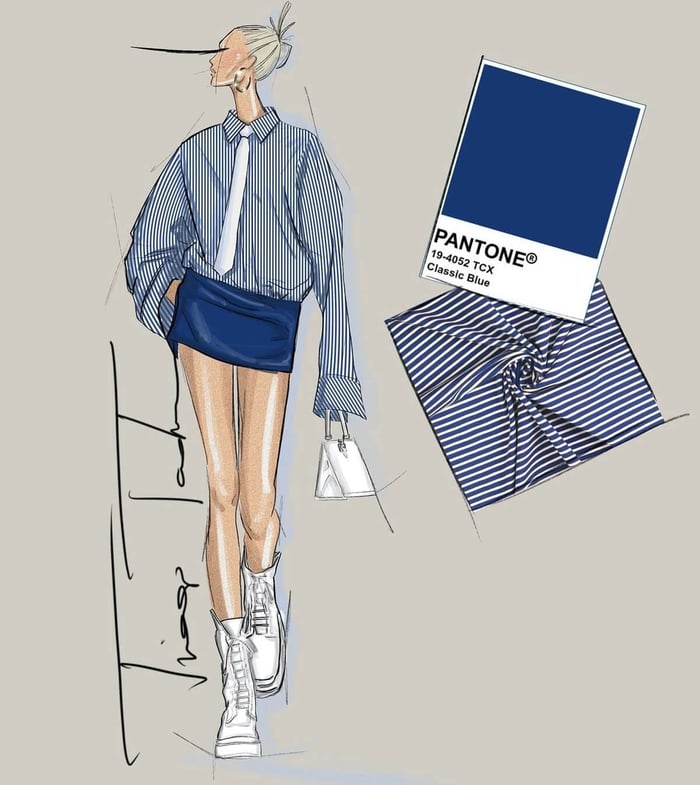
Tools of the Trade: What Every Sketcher Needs
You don’t need fancy tools to begin with, but having the right ones elevates your work. Essentials include:
Graphite pencils (HB to 6B)
Ink pens and fine liners
Watercolor brushes or markers
Copic markers for rendering
Textured sketchbook paper
White gel pen for highlights
Digital tablets are great for refining work, but they should complement—not replace—analog sketching during the ideation phase.
Developing Your Signature Illustration Style
When you look at fashion sketches by designers like Karl Lagerfeld, David Downton, or Megan Hess, their fashion illustration style is instantly recognizable.
To develop your own:
Sketch daily, even for 10 minutes
Try new media (charcoal, pastel, digital hybrid)
Study other illustrators, but don’t mimic them
Embrace imperfection; it’s part of your voice
Your style evolves with time. It might start minimal and evolve into maximalism or vice versa. What matters is consistency and authenticity.
Fashion Sketches in the Design Workflow
Fashion sketching isn’t just for show. It plays a functional role in a designer’s workflow:
Ideation – Where initial concepts are born
Concept development – Variations, silhouettes, and styling
Tech pack preparation – Translating sketches into production-ready diagrams
Marketing and presentation – Sketches are used in lookbooks, portfolios, and mood boards
Even when digital tools take over, the essence often begins on paper.
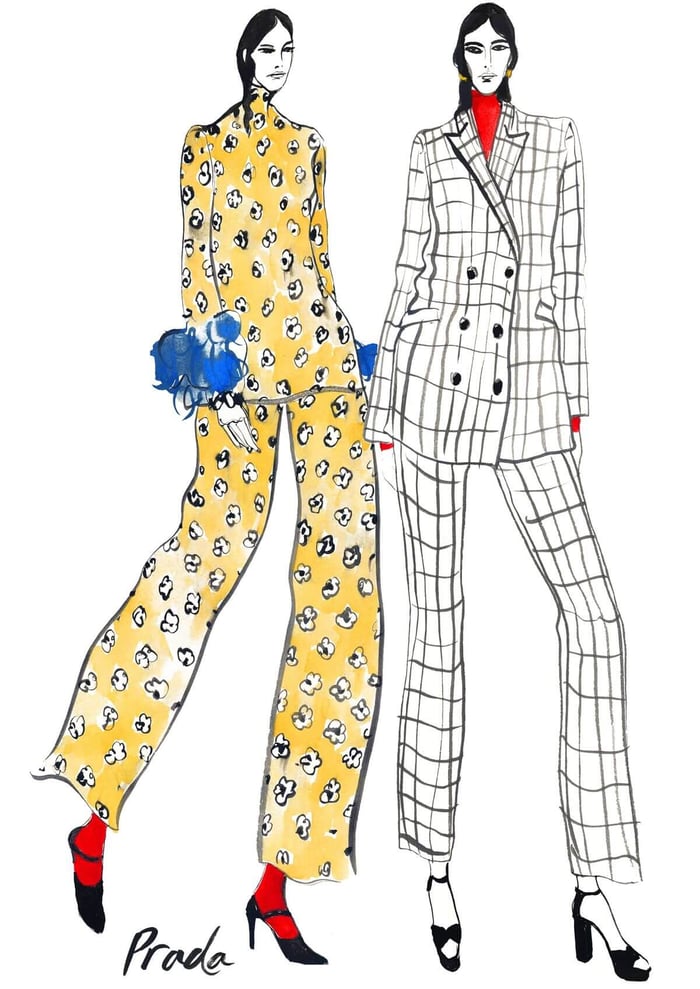
The Modelia Connection: Bridging Sketch and Digital Realism
While hand-drawing captures the soul of a design, presenting those designs in a compelling, scalable way is where AI comes in.
Modelia, an AI-powered fashion imagery platform, bridges this gap. Designers can start with a hand-drawn sketch, then use tools like sketch-to-image AI to visualize that design on a real-looking model.
This is especially valuable when you need to pitch ideas to investors, show collections without sewing samples, or build lookbooks fast. The hand-drawn lines bring the emotion. Modelia brings it to life, photorealistically and at scale.
It’s not about replacing sketching. It’s about extending its reach.
Fashion Sketch Challenges and How to Overcome Them
Every designer hits a wall at some point. Here are common sketching challenges and how to push through:
a. “My proportions are always off.”
Use croquis templates or overlay tracing paper until muscle memory builds.
b. “I can’t draw hands or faces.”
Simplify. Many designers use faceless or gloved figures. Focus on the garment.
c. “I run out of ideas.”
Revisit mood boards. Sketch the same design five different ways. Change fabric, pose, or accessory. Repetition fuels variation.
d. “I’m too slow.”
Speed comes with confidence. Practice quick sketches alongside detailed ones.
Using AI as a Design Partner - Not a Replacement
AI won’t replace artists who embrace it. Designers who combine analog sketching with smart tools like Modelia create a more efficient, collaborative, and inspired workflow.
For example:
Sketch a rough jacket design on paper
Scan and enhance it digitally
Use Modelia to apply it to a model of your target customer
Instantly generate versions with different colors or fabrics
You stay in creative control. AI does the heavy lifting where needed.
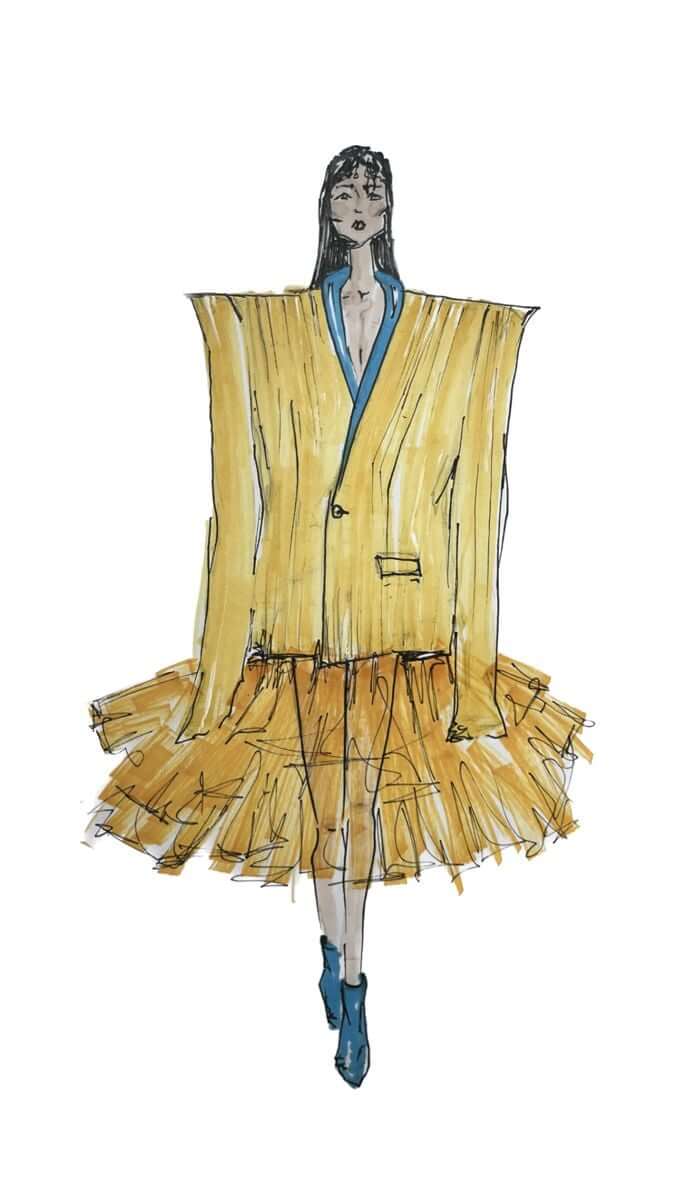
Final Thoughts: Holding On to the Handmade
In fashion, trends move fast, and tech evolves faster. But creativity doesn’t come from tools, it comes from the human hand, the mind, and the heart.
Hand-drawn fashion sketches aren’t just a nostalgic throwback. They are the blueprint of innovation, the artist’s fingerprint, and the soul of every collection. Whether you’re a student, professional designer, or hobbyist, sketching grounds you in the fundamentals of fashion.
Digital tools can amplify that, but nothing replaces the magic of the first line drawn on paper.
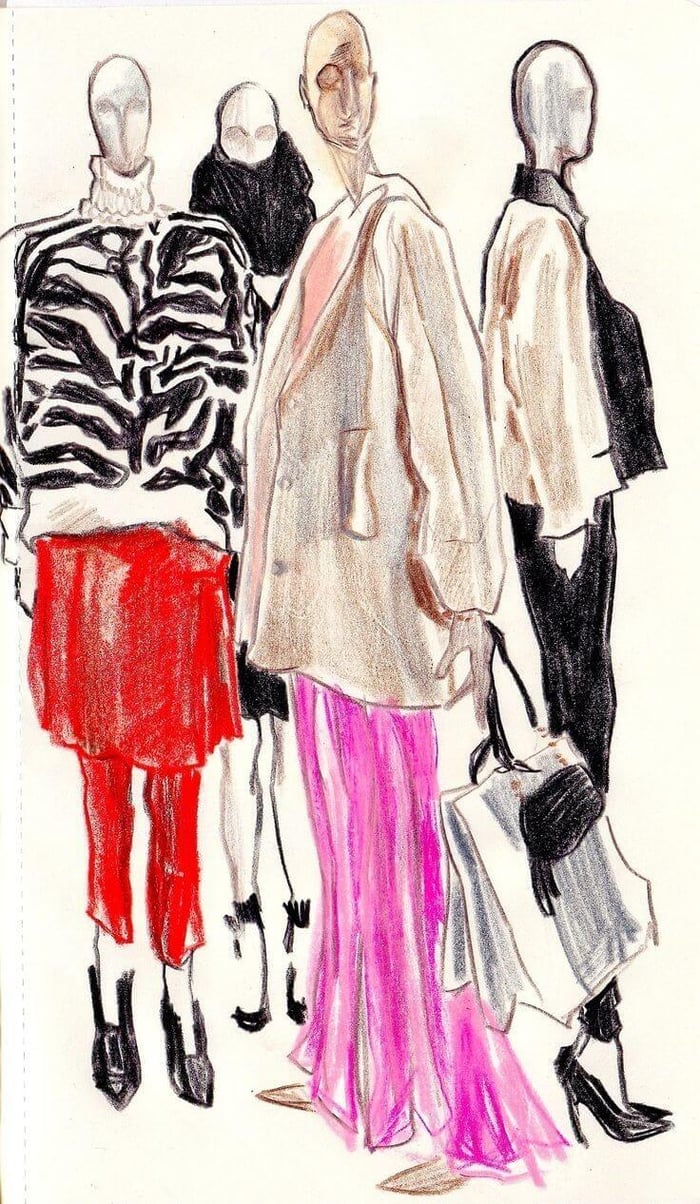
The Timeless Power of Hand-Drawn Fashion Sketches
One of the most powerful aspects of hand drawn fashion sketches is how they allow designers to explore emotional storytelling through subtle details. From the way a hemline flutters on the page to the angle of a shoulder or a hand placement, these sketches express a garment’s attitude before it’s even produced. Unlike digital renderings that often feel too polished, hand-drawn sketches embrace rawness and experimentation. They leave room for interpretation, which is vital in the early phases of creative direction.
In many fashion schools and studios, hand drawn fashion sketches are still a foundational skill taught before students even touch a computer. They encourage spatial awareness, design intuition, and a deeper understanding of silhouette and proportion. For young designers trying to build a distinct aesthetic, returning to pen and paper is often where the most authentic ideas emerge. It's a process that connects creativity with craft, one deliberate line at a time.
Visit Modelia and keep learning about fashion and AI
FAQ: Hand-Drawn Fashion Sketches
1. What are hand-drawn fashion sketches used for?
They are used in the early stages of fashion design to visualize clothing concepts, communicate ideas to teams, and develop collections. They also play a role in marketing, storytelling, and portfolio building.
2. Do I need to be good at drawing to be a fashion designer?
Not necessarily. Basic sketching helps communicate ideas, but many designers collaborate with illustrators or use digital tools. That said, practicing drawing is always a useful skill.
3. How do I improve my fashion drawing skills?
Practice regularly, study human anatomy, use croquis templates, and analyze how garments move. Experiment with different styles and media. Consistency is key.
4. Can I turn my sketches into digital mockups?
Yes! Tools like Modelia can take sketches and turn them into photorealistic images by simulating how the garment would look on a real model, streamlining the design process.
5. What is the difference between fashion illustration and technical drawing?
Fashion illustration focuses on mood, emotion, and style, often in an artistic way. Technical drawings (flats) are precise diagrams used to produce garments and communicate measurements.
How would you rate this article:
Related Articles
- How AI Video Generators Can Revolutionize Your Marketing Strategy
- 7 Fashion Brand Marketing Strategies to Succeed in a Competitive Market
- Virtual Clothing Models: The Future of Fashion Design and Online Shopping
- Smart Clothing Technology: The Future of Wearable Tech and Fashion Innovation
- Best 5 Hautech.ai Alternatives to Explore in 2025
- Introducing AI fashion stylist
- How to Create a Clothing Business Plan (Step-by-Step)
- AI-Generated Fashion: Revolutionizing the Fashion Industry with Artificial Intelligence
- The Art of Hand-Drawn Fashion Sketches in Modern Design
- How to Stay Stylish on a Budget: Fashion Shopping Tips for the Savvy Shopper
